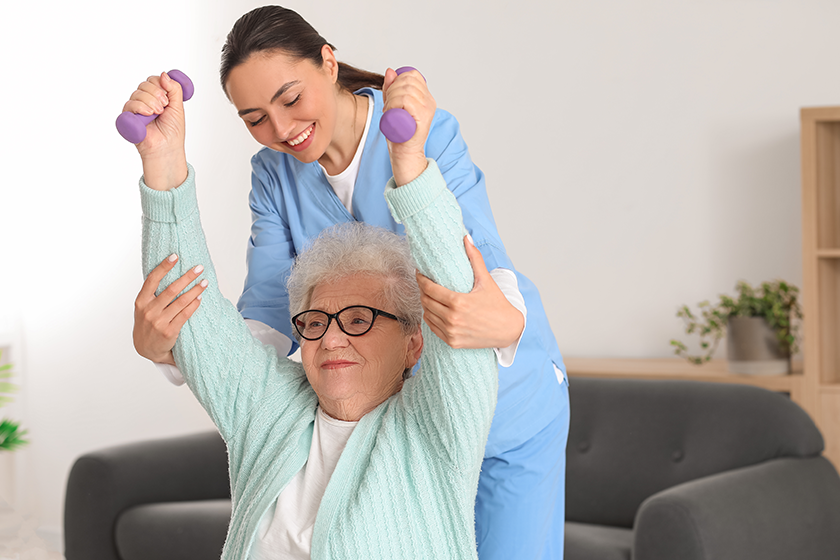Living independently is a goal for many people as they enter their later years. For you and your loved ones, physical therapy can play a major role in maintaining or even enhancing your ability to live independently. Physical therapy is a proactive approach that can help address many age-related physical challenges.
Promoting Mobility and Balance
One of the most immediate benefits of physical therapy is improved mobility. As we age, the body naturally becomes more prone to stiffness, joint pain, and reduced flexibility.
These changes can significantly affect daily activities, making simple tasks like walking, standing, or climbing stairs more difficult. Physical therapists work with individuals to strengthen muscles and improve joint function, helping them move more freely.
Balance is another important aspect of mobility. With age, the risk of falls increases due to diminished balance and coordination. Physical therapy can help by targeting balance exercises to enhance stability.
A trained therapist will introduce specific exercises that promote proprioception, which is the body’s ability to sense its position in space.
Pain Management and Recovery
Chronic pain is a common challenge among those in their later years. Conditions such as arthritis, back pain, or recovery from surgery can make everyday activities difficult or even impossible. Physical therapy can offer a holistic approach to pain management. Instead of relying solely on medication, therapy uses a combination of manual techniques, stretches, and strength exercises to alleviate discomfort.
Therapists also teach techniques for managing pain during normal routines. For instance, certain stretches can help relieve tension and reduce stiffness in the back or joints. Whether recovering from surgery or managing a chronic condition, physical therapy equips you or your loved ones with tools to better cope with pain, improving your overall quality of life.
Building Strength and Flexibility
As muscles weaken and joints become less flexible with age, performing everyday activities can become more difficult. Physical therapy focuses on targeted exercises to increase strength and flexibility. This helps the elderly perform tasks like lifting, bending, and reaching with more ease and less discomfort.
Regularly participating in strength-building exercises helps in daily tasks and enhances endurance, making it easier to remain active and engaged in community events or hobbies.
Flexibility exercises can also improve the range of motion in joints. A physical therapist will design exercises that gently stretch and strengthen muscles, helping you or your loved ones regain or maintain your independence.
Customized Programs to Fit Individual Needs
Physical therapy is not one-size-fits-all. Each person’s body, health condition, and mobility needs are unique. Physical therapists assess individual needs and create personalized care plans that align with specific goals.
These plans may focus on improving strength, flexibility, or mobility, depending on the person’s current health and future aspirations.
This tailored approach is beneficial in managing chronic conditions, rehabilitating injuries, or simply improving overall wellness.
For you or your loved ones, customized physical therapy can play a pivotal role in maintaining independence, whether you are dealing with arthritis, recovering from surgery, or working on improving your overall strength and flexibility.
Embracing Active Living with the Support of Physical Therapy
The combination of physical therapy and engaging lifestyle activities can be life-changing. In our retirement community, our residents benefit from an environment that fosters independence through specialized programs, wellness services, and an active community life.
With access to physical therapy, a variety of wellness activities, and support services, you or your loved ones can thrive in your golden years, staying active, pain-free, and connected.







